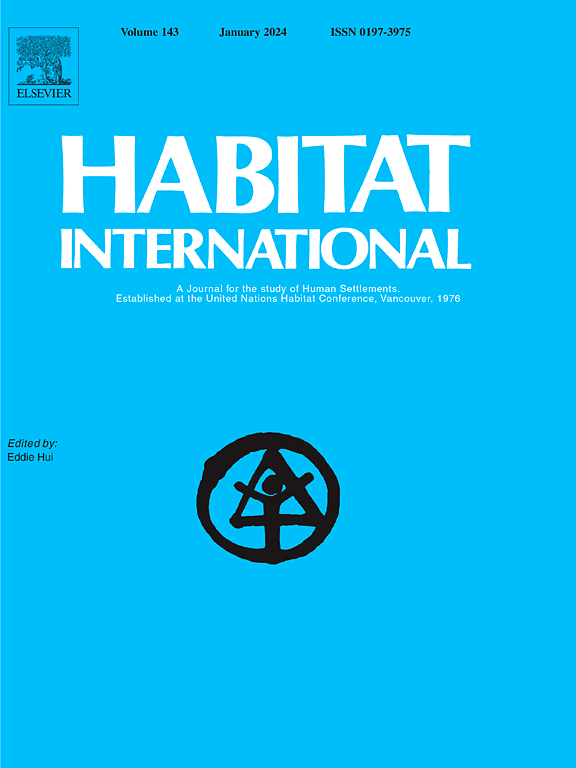医疗设施的空间可达性度量:与实际医疗旅行行为的匹配
IF 6.5
1区 经济学
Q1 DEVELOPMENT STUDIES
引用次数: 0
摘要
在“以人为本”概念的指导下,基于行为地理学和以人为本范式的测量医疗设施空间可达性的方法引起了学术界的广泛关注,并成为城市规划研究的一个关键焦点。在全球和地方政策框架中,加强医疗设施的空间可达性是一项重要的公共卫生政策。然而,考虑到个人层面医疗旅行行为的复杂性,改善空间可达性在解决医疗保健挑战方面的有效性仍然不确定。在此研究中,我们建立了一个多模式医疗旅游链,并提出了一个包含医疗旅游特征的空间可达性模型。旨在为“以人为本”的医疗设施规划提供理论依据。结果表明:(1)出行阻抗影响出行限制阈值和模态份额,从而影响医疗出行行为偏好。具体而言,步行和骑自行车由于其对旅行阻抗的容忍度较低而具有较低的模态份额,而驾驶和公共交通在高旅行阻抗条件下具有较高的模态份额。(2)医疗旅行时间的变异导致了空间可达性的时间差异。尽管不同日期的旅行时间波动很小,但在检查不同的时间间隔时,会出现明显的潮汐模式。(3)通过引入出行份额,选择最优出行限制阈值和阻抗系数,可以更准确地反映医疗出行特征的空间可达性,防止局部高估或低估。总体而言,我们开发了一种将医疗旅行特征与空间可达性相结合的研究方法。该方法可以深入了解居民所经历的时空约束,并获得医疗资源配置策略的有效性。为优化全球发展中国家医疗设施配置提供了经验证据。本文章由计算机程序翻译,如有差异,请以英文原文为准。
Measuring spatial accessibility to medical facilities: Aligning with actual medical travel behavior
Guided by the concept of “people-centered,” methods for measuring spatial accessibility to medical facilities, rooted in behavioral geography and human-centered paradigm, have attracted significant scholarly attention and emerged as a critical focus in urban planning research. Enhancing spatial accessibility to medical facilities is an important public health in global and local policy frameworks. However, the effectiveness of improved spatial accessibility in addressing healthcare challenges remains uncertain, given the complexity of individual-level medical travel behavior. In this study, we developed a multimodal medical travel chain and proposed a spatial accessibility model that incorporates the characteristics of medical travel. We aim to provide a theoretical foundation for “people-centered” medical facility planning. The results indicate that: (1) Travel impedance affects both the travel limit threshold and modal share, thereby influencing preferences for medical travel behavior. Specifically, walking and cycling have lower modal shares due to their lower tolerance for travel impedance, whereas driving and public transportation demonstrate higher modal shares under high travel impedance conditions. (2) The variability in medical travel times results in temporal differences in spatial accessibility. Despite minimal fluctuations in travel times across different dates, a distinct tidal pattern emerges when examining various time intervals. (3) By introducing travel shares and selecting optimal travel limit thresholds and impedance coefficients, the spatial accessibility that reflects medical travel features can more accurately prevent localized overestimation or underestimation. Overall, we developed a research methodology that integrates medical travel features with spatial accessibility. This method provides insights into the spatiotemporal constraints experienced by residents and accesses the effectiveness of medical resource allocation strategies. It offers empirical evidence for optimizing the allocation of medical facilities in developing countries globally.
求助全文
通过发布文献求助,成功后即可免费获取论文全文。
去求助
来源期刊

Habitat International
Multiple-
CiteScore
10.50
自引率
10.30%
发文量
151
审稿时长
38 days
期刊介绍:
Habitat International is dedicated to the study of urban and rural human settlements: their planning, design, production and management. Its main focus is on urbanisation in its broadest sense in the developing world. However, increasingly the interrelationships and linkages between cities and towns in the developing and developed worlds are becoming apparent and solutions to the problems that result are urgently required. The economic, social, technological and political systems of the world are intertwined and changes in one region almost always affect other regions.
 求助内容:
求助内容: 应助结果提醒方式:
应助结果提醒方式:


